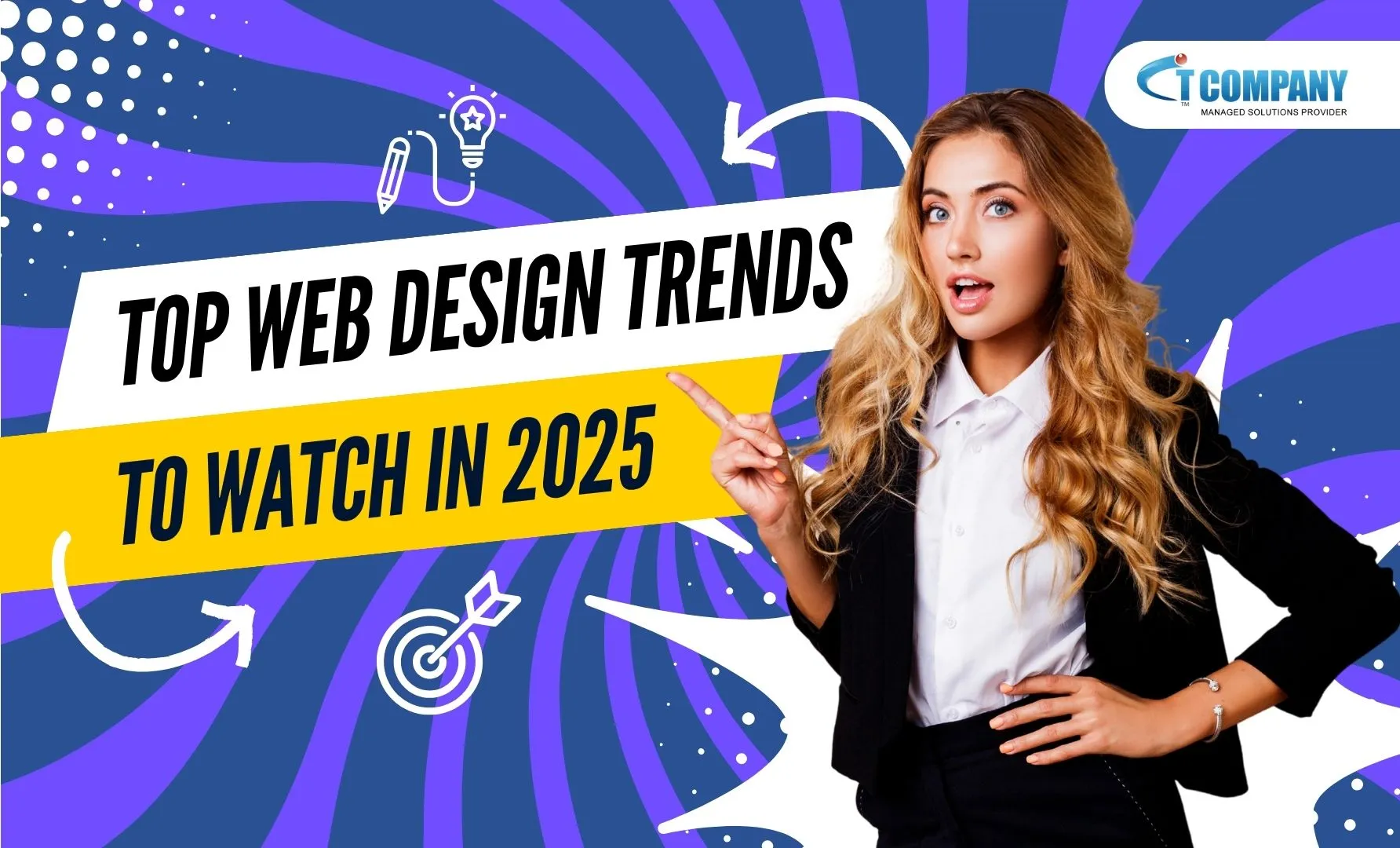The world of web design is constantly evolving, and top web design trends to watch in 2025 are set to reshape how websites look, feel, and function. Businesses, designers, and marketers must keep up with the most recent developments in web design in order to be competitive as technology develops and consumer expectations change. The forthcoming trends in contemporary website design, UX/UI tactics, mobile-friendly website practices, and interactive elements that will rule the digital environment in 2025 will all be covered in this piece.
Introduction
Web design is a fast-paced field, and to stay relevant, businesses need to embrace new tools, techniques, and approaches. With 2025 on the horizon, it’s clear that top web design trends to watch in 2025 will revolve around user-centric design, mobile optimization, and innovative, interactive features. Designers may produce websites with outstanding user experiences (UX) and smooth interactions by keeping an eye on these trends. However, these trends will also emphasize performance, accessibility, and cutting-edge technology like artificial intelligence and machine learning; they are not simply about aesthetics.
The most significant design trends to look out for in 2025 will be discussed in this article. Knowing these trends can help you keep ahead of the competition and give users the greatest online experience, whether you’re a web designer, marketer, or business owner.
Key Benefits of Staying Ahead in Web Design
Adopting the latest web design trends comes with several advantages:
Improved User Engagement: Increased conversions result from modern designs that make it simpler for users to explore, interact, and engage with your website.
SEO Boost: These trends encourage websites that are quick, responsive, and offer positive user experiences, all of which are favored by search engines like Google.
Enhanced Brand Perception: A modern, eye-catching website may establish your company as creative and progressive, drawing more customers and increasing trust.
Better Accessibility: Many of the 2025 trends focus on making websites more inclusive, helping you reach a wider audience.
Let’s dive into the top web design trends to watch in 2025 that will have a significant impact on how users interact with digital experiences.
The Latest Web Design Trends to Watch
AI-Powered Personalization
Artificial intelligence is becoming a cornerstone of modern website design. By 2025, we can expect AI to power personalized user experiences more than ever. Websites will employ AI more and more to customize information, recommendations, and designs for each user, from dynamic content that changes based on visitor behavior to chatbots powered by AI that offer immediate assistance.
Why it matters: Customized websites give users a more interesting, customized experience, which boosts conversions and customer happiness. This field is already dominated by companies like Netflix and Amazon, and it is predicted to grow even more in the years to come.
Immersive Scrolling and Parallax Effects
Immersion scrolling, or “scrollytelling,” is rapidly becoming popular as a technique for making dynamic, interesting webpages. Anticipate parallax effects and other immersive techniques to become essential components of web design in 2025, enhancing the dynamic and captivating nature of websites.
Why it matters: By making the experience more fluid and cinematic, these effects might entice consumers to spend more time on the website. For websites that wish to tell a tale or present a product in an eye-catching manner, scrollytelling works especially well.
Minimalist Web Design
Simplicity will continue to reign supreme in 2025. Minimalist web design is all about eliminating distractions and focusing on the essentials: clean lines, clear typography, and strategic use of whitespace. Minimalism is not just about aesthetics—it’s about streamlining the user experience and making navigation as intuitive as possible.
Why it matters: Clean, uncluttered designs improve readability, reduce cognitive load, and enhance user experience. With fewer distractions, users can focus on the core message and take action more easily.
Dark Mode and High Contrast Visuals
Dark mode is predicted to become even more common in 2025 after taking the digital world by storm. Users may switch between light and dark settings on a lot of websites and apps. High contrast images will also gain popularity, which will make websites easier for people with visual impairments to use.
Why it matters: Dark mode reduces eye strain, saves battery life on mobile devices, and can give a modern, sleek look to websites. It also enhances focus by highlighting important elements on the page.
Mobile-First and Responsive Web Design Trends
Mobile Optimization for Speed and Performance
By 2025, mobile internet usage will likely surpass desktop usage even more. As a result, mobile optimization will remain at the forefront of web design. Websites will be designed and tested primarily for mobile devices before scaling to desktop versions.
Why it matters: Websites that load faster and work seamlessly on mobile devices provide a better user experience, which directly impacts SEO rankings and user retention rates.
Mobile-First UX/UI Considerations
Mobile-first design focuses on creating a user experience that works seamlessly on smaller screens before scaling up. This approach prioritizes essential features and eliminates unnecessary clutter, offering users an efficient and enjoyable experience on mobile devices.
Why it matters: A mobile-first UX/UI ensures that users accessing your site from smartphones and tablets have an optimized experience, resulting in higher engagement and lower bounce rates.
Interactive Website Features for Engaging Users
Because they provide consumers more influence over their surfing experience, interactive components are becoming more and more common in web design. In 2025, features like live chat capabilities, user dashboard customization, and interactive product demonstrations will be crucial. With the help of these features, users may engage with content in real time, personalizing the experience.
Why it matters: Interactive elements increase user engagement, making users feel more connected to the website and encouraging them to spend more time on it.
Best Practices for Implementing Web Design Trends
To stay ahead of the curve in 2025, it’s essential to integrate these design trends in a way that supports your overall business goals. Here are some best practices for implementing the latest trends:
User-Centered Design: Focus on the needs and preferences of your users. Create designs that solve problems and streamline navigation.
Responsive Design: Ensure your website is mobile-friendly, with fast loading speeds and seamless transitions between devices.
Test and Iterate: Regularly test your website for usability and performance. Collect feedback from users and iterate on the design accordingly.
Case Studies: Real-World Applications
Spotify
Spotify’s user interface uses AI to offer personalized playlists and recommendations based on listening history. The platform’s minimalist design and immersive parallax scrolling on mobile make it a perfect example of a future-ready web design.
Apple
Apple’s website embraces dark mode and high contrast visuals while offering an interactive experience for users exploring new products. Their mobile-first design ensures that the site performs flawlessly across all devices.
Conclusion
As we approach 2025, top web design trends to watch in 2025 will bring a focus on personalization, mobile optimization, and interactive user experiences. Businesses may develop more user-friendly, accessible, and engaging websites that increase conversions and foster more brand loyalty by adopting these trends.
In an increasingly competitive digital market, your website will stand out if you invest in AI, minimalist design, mobile-first tactics, and interactive features. To stay ahead of the curve and implement these trends, start getting ready immediately.



















